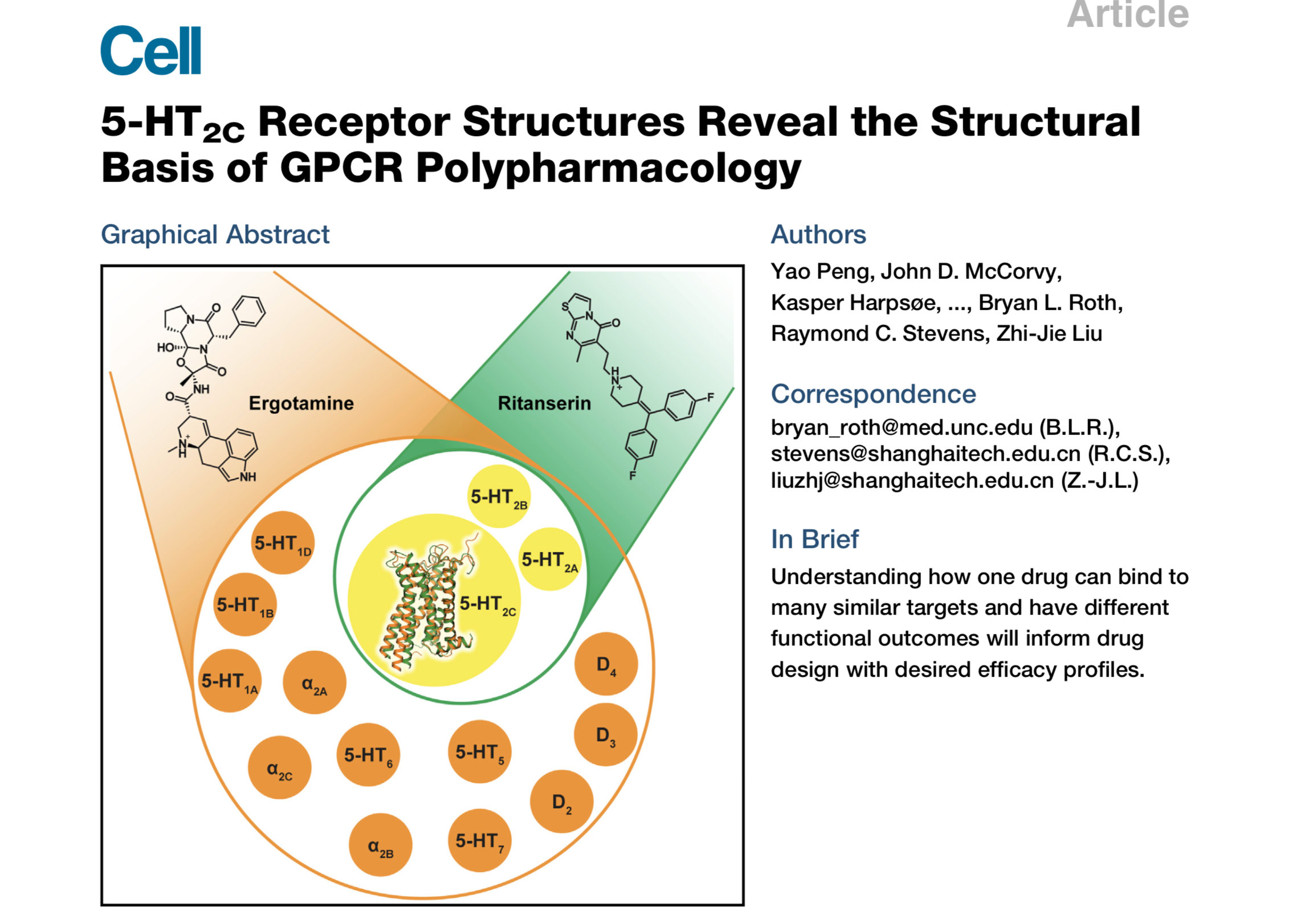February 1, 2018 - Polypharmacology is the next generation of disease treatment promising more effective drugs that are less toxic and have fewer side effects. However, polypharmacological drugs, which simultaneously act on multiple targets, remain extremely difficult to develop, though maybe not for long according to a study published this week in Cell.
Apparently, the key lies in obtaining a better understanding of the three-dimensional structure of receptor proteins, and this week an international team of scientists led by the iHuman Institute at ShanghaiTech University published results showing the high-resolution atomic structure of the human serotonin receptor 2C (5-HT2C); an important G-protein-coupled receptor (GPCR) drug target for the treatment of schizophrenia and drug abuse, and recently was central to the development of the anti-obesity drug Belviq.
Lead author, Yao Peng said of their results, “This is an important step towards realizing the full potential of polypharmaceuticals. The ability to observe atomic-level structures of receptors like 5-HT2C will revolutionize drug development.”
Together with partners from the University of North Carolina, University of Southern California and the University of Copenhagen, three-dimensional structural images of 5-HT2C were presented in active and inactive states, as well as the deciphering of the structural basis of GPCR polypharmacology. Such detailed data of key receptors will help drug hunters design new polypharmacology drugs, revolutionizing the treatment of disease.
“The detailed molecular structure of the 5-HT2C receptor will help researchers understand the molecular basis of how polypharmacology and selectivity are achieved. This is the first step towards a rational utilization of the knowledge for future GPCR drug design,” said corresponding author and iHuman Executive Director, Professor Zhi-Jie Liu.
iHuman Founding Director and co-author, Professor Raymond Stevens added “Our hope is that our approach will be invaluable for determining the polypharmacological determinants of other promiscuous drugs and provide a roadmap for the rational design of polypharmacological ligands to treat some of the most challenging diseases, particularly those in mental health.”
Polypharmacology stands in stark contrast to traditional therapeutic drugs which have, for the past several decades, been designed for a single target to avoid unwanted, off-target side-effects. However, the one-drug-one-target strategy is nonetheless frequently unsuccessful and struggles to treat complex central nervous system (CNS) disorders where the etiologies may be multifactorial and polygenic. Drugs with a polypharmacological basis can be more effective therapeutics, as exemplified by the atypical antipsychotics clozapine (Clozaril?) and aripiprazole (Abilify), which interact with numerous GPCRs. As we start to develop a more complete picture of the human genome and proteome, polypharmacutical approaches will likely become more powerful.

This work was supported by the Shanghai Municipal Government; ShanghaiTech University; grants from the Ministry of Science and Technology of China (2014CB910400 and 2015CB910104); the National Nature Science Foundation of China (31330019) (to Zhi-Jie Liu); the NIH (R01MH112205 and U19MH82441 to Bryan Roth; U54GM094618 to Vsevolod Katritch); the Russian Science Foundation (16-14-10273 to Petr Popov); and Lundbeck Foundation (R163-2013-16327 to David E. Gloriam).
Full-text paper link: http://www.cell.com/cell/fulltext/S0092-8674(18)30001-1
About the iHuman Institute ( http://ihuman.shanghaitech.edu.cn)
Located in the heart of Zhangjiang High Technology Park in Shanghai, China, the iHuman Institute at ShanghaiTech University is the Asian gateway to the world for imaging across scales. The iHuman Institute is focused on the basic and applied science of building an atomic resolution 3-dimensional model of the human body. By integrating molecular, cellular and organ imaging together, we can understand how all the parts work together to make us who we are. One of iHuman Institute dreams is to see routine and robust whole-body imaging occur at the atomic resolution to detect diseases before it is too late to treat with medicines.

